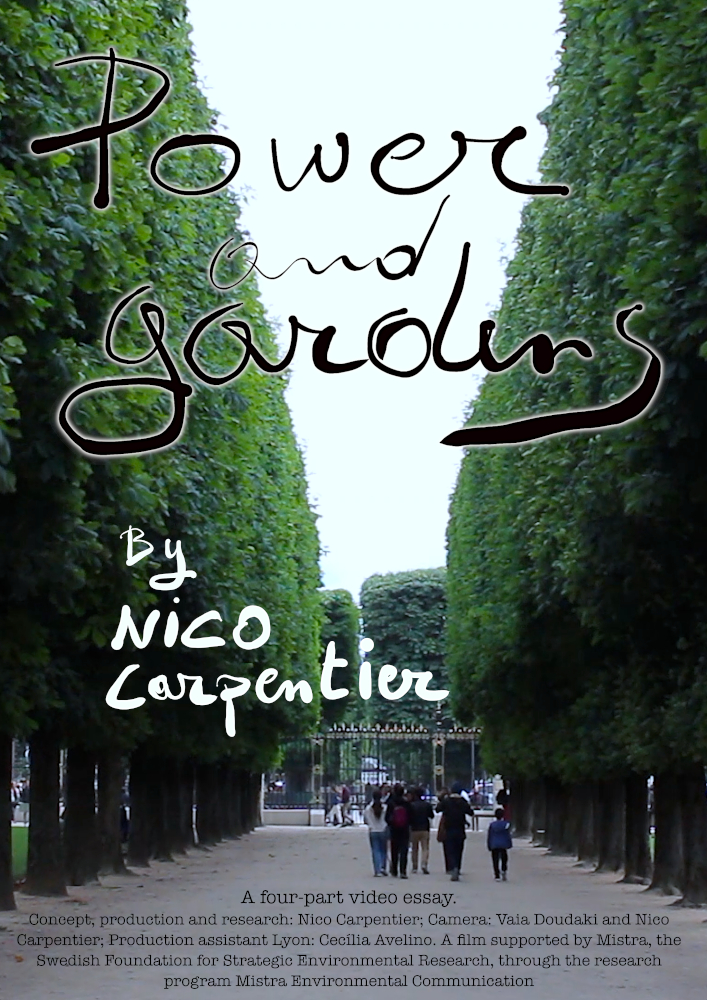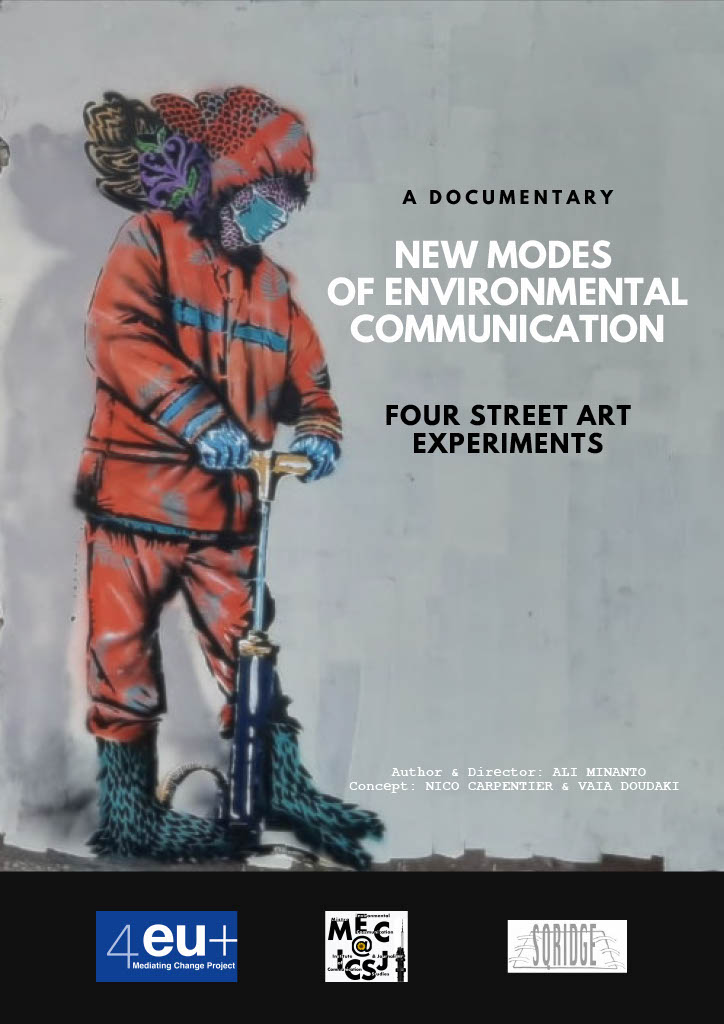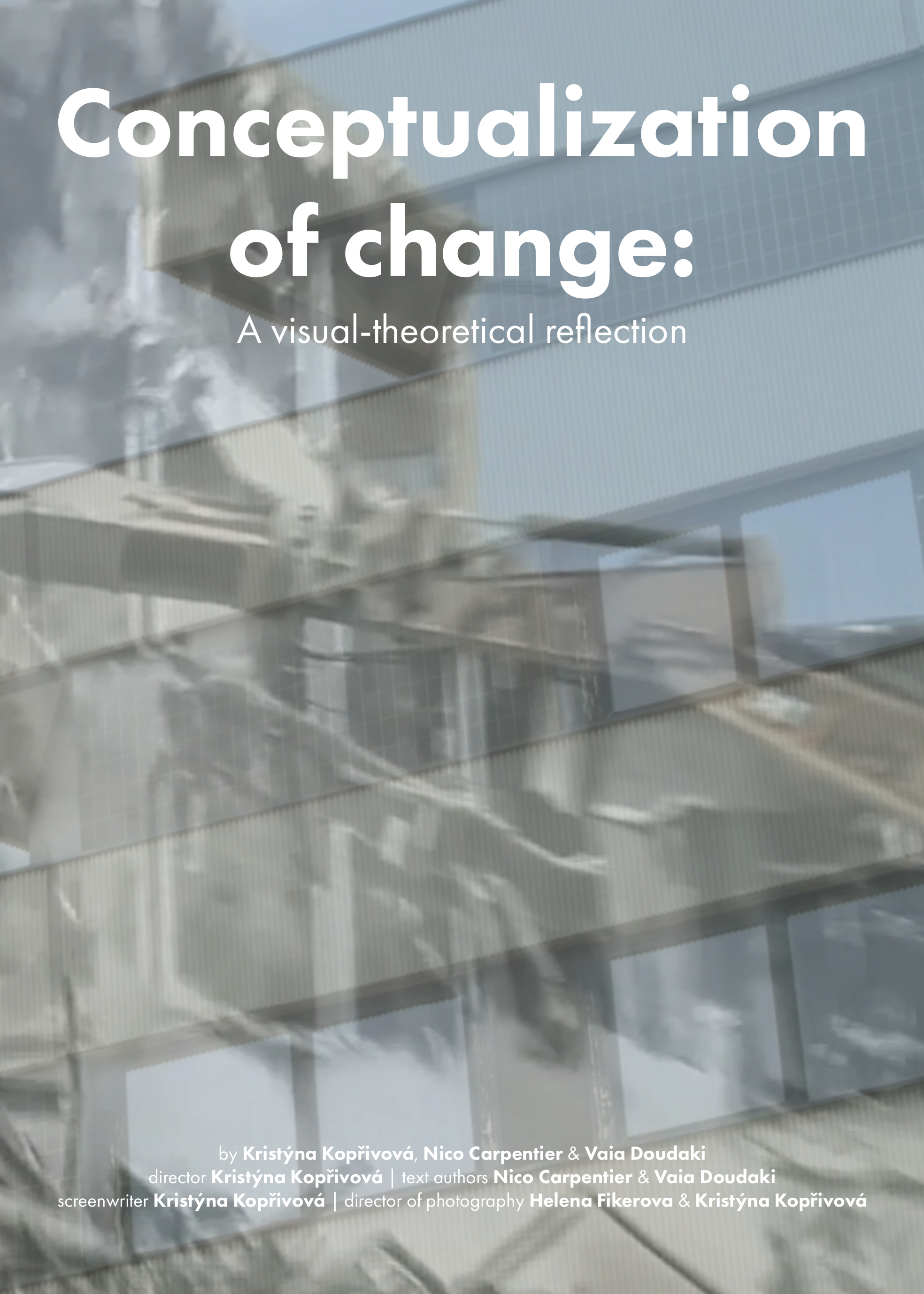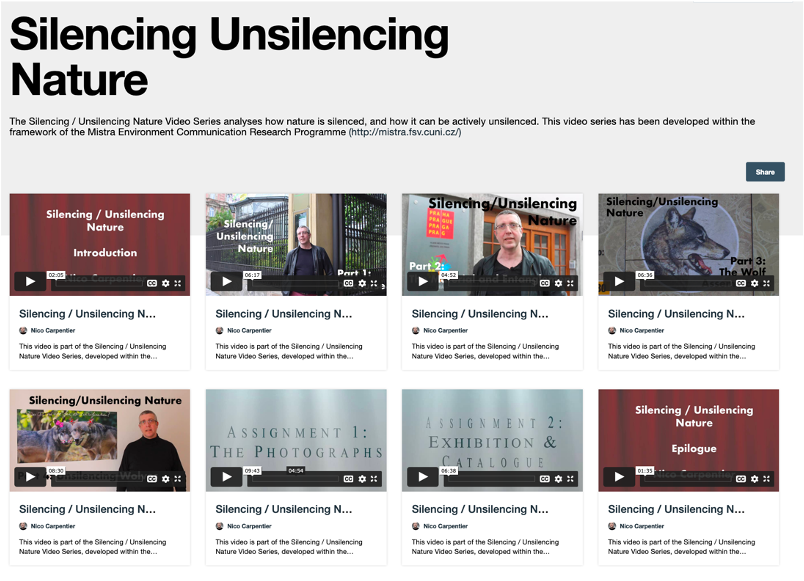This is an archived website, with no changes made after 12 December 2023.
Videos
Films
| “Power and Gardens” is a four-part video essay by Nico Carpentier that investigates how human-nature relationships are condensed in the gardens of the European cities of Paris, Lyon and Prague. Driven by a discursive-material analysis, the essay is a reflection on how gardens are locations where nature is tamed, and how they often perform an anthropocentric ideology that is strengthened by a series of other discourses, such as capitalism and colonialism. These discourses are not disconnected from the material world; they are, on the contrary, entangled with a series of material gardening practices where nature is used as a sculpting element, where the threat of the wilderness is removed, where exotic nature becomes an object of display, where humans organize commemoration and entertainment, and where biotic life is created. While the first part (“Domesticating Nature”) provides the more theoretical backbone of this discursive-material analysis, the second part of the essay (“Ways of Taming”) discusses the taming mechanisms that tilt the power relations towards humans. The third part (“Gardens and Class”) then moves away from the royal gardens, and shows how gardens have been, for centuries, sites of societal struggle, for instance between different class positions, and between the logic of privatization and the commons. The fourth and final part (“Nature’s Agency”) analyses how nature resists the human disciplining attempts, and can exercise its own agencies. This final part of the essay concludes with a reflection on the ideal garden, and the need to develop more (and new) synergetic models for gardens that rethink the power relations between humans and nature in more fundamental ways. |  Power and Gardens, Concept, production and research: Nico Carpentier; Camera: Vaia Doudaki and Nico Carpentier; Production assistant Lyon: Cecília Avelino. Published as audiovisual essay in Tecmerin: Journal of Audiovisual Essays, 12, 2023(2). Power and Gardens, Concept, production and research: Nico Carpentier; Camera: Vaia Doudaki and Nico Carpentier; Production assistant Lyon: Cecília Avelino. Published as audiovisual essay in Tecmerin: Journal of Audiovisual Essays, 12, 2023(2). |
| “New Modes of Environmental Communication: Four Street Art Experiments” is a 23:34-minute documentary film by Ali Minanto, that reflects on how knowledge about the environment is produced and shared in creative ways, moving beyond the, sometimes, narrow spaces of academia, without disregarding academic knowledge. One of these spaces of knowledge production and creative communication is street art, where artistic aesthetics and practices of civic expression are combined. This video features the experiment, where academic researchers, based at Charles University in Prague and affiliated to the Mistra Environmental Communication Research Program and the 4EU+ European University Alliance, commissioned four Indonesian street artists to produce four street artworks in the Indonesian city of Yogyakarta: “Welcome New Pollution” by Anagard, “Plant Trees Plant Hope” by Guerrillas, “Plastic Reduce” by Kinky Twenty, and “Planting Determination” by Young Surakarta. Embedded in deeply localized knowledge about the environment and with great communicative eloquence, these street artworks provide visual (and highly visible) alternative discourses that critique indifference towards, and exploitation of, the environment. In the documentary, we see Anagard reflect about the phenomenon of medical waste (in particular the disposal of masks used during the pandemic). Guerrillas critiques the rampant forest fires in Indonesia, used as a deforestation tool by plantation corporations. Kinky Twenty’s work is about the environmental threat posed by plastic waste. And finally, Young Surakarta emphasizes the need of planting trees as a way to protect the environment and to help to ensure humankind’s survival. |  New Modes of Environmental Communication: Four Street Art Experiments, Author and Director: Ali Minanto, Concept: Nico Carpentier and Vaia Doudaki New Modes of Environmental Communication: Four Street Art Experiments, Author and Director: Ali Minanto, Concept: Nico Carpentier and Vaia Doudaki |
| “Conceptualization of Change” is a 12-minute film that provides a theoretical reflection on the signifier “change”, and its five dimensions: Normativity, Scale and Intensity, Focus, Control and Time. Filmed in Prague, with the integration of archive material that is mostly related to the 1989 Velvet Revolution, the essay unpacks the significatory complexity of change, mapping the diversity of meanings that have been allocated to this notion. The film’s five chapters organize a dialogue between fast-paced and still poetic imaginaries and voice-overs, starting with the normativity of change, and its utopian and dystopian meanings. The Scale and Intensity chapter reflects on the sometimes minute and sometimes all-encompassing nature of change, combined with its hegemonic and counter-hegemonic roles. The Focus chapter deals with the autonomy and dependency of change, while the Control chapter focusses on how change can be controlled and controlling. Finally, the Time chapter brings in differences between process and outcome, and patterns and events. Analytically and methodologically, the film uses a post-structuralist paradigm to assist theory formation, grounded in, and combined with, an analysis of the content produced for the Mediating Change Colloquium, that took place in Prague on 20 and 21 November 2020. To render this source of inspiration and analysis visible, the film starts with a one-minute preamble, including a selection of voices from this Colloquium, in order to then shift to a more general theoretical discussion on change, with its five dimensions. |  Conceptualization of Change by Kristýna Kopřivová, Nico Carpentier and Vaia Doudaki. Director: Kristýna Kopřivová, Text authors: Nico Carpentier and Vaia Doudaki, Screenwriter: Kristýna Kopřivová and DoP: Helena Fikerova and Kristýna Kopřivová. Published as audiovisual essay in the Journal of Science and Technology of the Arts. Conceptualization of Change by Kristýna Kopřivová, Nico Carpentier and Vaia Doudaki. Director: Kristýna Kopřivová, Text authors: Nico Carpentier and Vaia Doudaki, Screenwriter: Kristýna Kopřivová and DoP: Helena Fikerova and Kristýna Kopřivová. Published as audiovisual essay in the Journal of Science and Technology of the Arts. |
| Silencing / Unsilencing Nature is a series of four episodes, with a duration of 26 minutes, that unpack the relationship between humans and nature, and how nature often has been silenced. The four videos are part of an educational package that also includes an introductory video, one or two exercises for each of the four episodes, two assignment videos, an epilogue video and a workshop script. |  All videos related to the educational package Silencing / Unsilencing Nature from Nico Carpentier on Vimeo. The entire package is available upon motivated request, free of charge, by emailing Nico Carpentier, after which a password will be provided. Please use the contact email address in the menu above. All videos related to the educational package Silencing / Unsilencing Nature from Nico Carpentier on Vimeo. The entire package is available upon motivated request, free of charge, by emailing Nico Carpentier, after which a password will be provided. Please use the contact email address in the menu above. |
Videos
| AIR is a short video about the artist-in-residence programme coordinated by the Mistra-EC team at the Institute of Communication Studies and Journalism at Charles University, featuring experiences and outputs of the artists-in-residences in Prague (Czech Republic), Uppsala (Sweden), and the Sunshine Coast (Australia) hosted by Mistra-EC researchers and associates. |
| Epistle of an Obscure Man is a video letter produced by Mistra-EC researcher Marcus Bussey at the University of the Sunshine Coast on 31 October 2023, as part of Work Package 5 – Media & Art's participatory tools. |
| A Visit to Moulding Nature is a brief video impression of the “Moulding Nature: Discursive Struggles Over the Environment” Exhibition organized at Färgfabriken (Stockholm, Sweden) from 26 August to 26 November 2023. |
| Moulding Nature Exhibition Opening Talk is a video of Nico Carpentier's opening talk at the “Moulding Nature: Discursive Struggles Over the Environment” Exhibition at Färgfabriken (Stockholm, Sweden) on 26 August 2023. Moulding Nature Exhibition Opening Talk from Nico Carpentier on Vimeo. |
| The Environmental Ideologies Map: An artistic-academic intersection at Färgfabriken is an introductory video by Nico Carpentier about the Environmental Ideologies Map displayed at the “Moulding Nature: Discursive Struggles Over the Environment” Exhibition organized at Stockholm-based art centre Färgfabriken from 26 August to 26 November 2023. The map, developed by Nico Carpentier (with a design by Irene Straccuzzi), explores competing ideological projects over human-nature relationships and the more-than-human world(s). The Environmental Ideologies Map at the Moulding Nature Exhibition from Nico Carpentier on Vimeo. |
| #uglynatureselfies is a short fiction film by Tessa Joosse inspired by the paper ‘The quest for “nature” in selfies: how platforms shape nature/society relationships’ by Malte Rödl, Jutta Haider and Sofie Joosse. In the movie, an influencer is questioning the representation of nature on social media. #uglynatureselfie from film@tessajoosse.com on Vimeo. |
| Urban Bird is a video by visual artist Soraya Poulin about her residency project developed during Mistra-EC’s artist-in-residence (AiR) program in Prague (September-October 2022), in collaboration with Mistra-EC researchers at the Institute of Communication Studies and Journalism at Charles University. The project explores the relationship between humans and nature in the city, and their various power dynamics, through a collage of paintings, photography and drawings. |
| Introducing Silencing/Unsilencing Nature is an introductory video about the article "Silencing / Unsilencing Nature. A Participatory Visual Essay on the Right to Flourish", by Nico Carpentier. The article was published in the Special Issue on Arts-Based Research in Communication and Media Studies, in Comunicazioni Sociali (2021). Free download at https://bit.ly/3a0eR8m. Introducing Silencing / Unsilencing Nature from Nico Carpentier on Vimeo. |
| A short video presentation on work package 5 introduces the work of Mistra Environmental Communication research team at the Institute of Communication Studies and Journalism (ICSJ) at Charles University. Studying the struggles between the different environmental and sustainability discourses, while, at the same time, working on developing strategies for a constructive engagement with new or marginalised perspectives on issues related to the planet, the team examines three communicative fields: audio-visual media, social media, and the arts. Media, Arts & Environmental Communication from Nico Carpentier on Vimeo. |
Podcasts
| Receptions On Wolf Talks covers research and receptions on the media and arts research project and exhibition “Wolf Talks in Sweden” that took place in the city center of Uppsala in October and November 2022, as part of Work package 5 -Media & Art of Mistra-EC Research Programme conducted by the Institute of Communication Studies and Journalism (ICSJ) at Charles University. The podcast is available on SoundCloud as part of the CULCORC podcast series. CULCORC is the Culture and Communication Research Centre at ICSJ, Faculty of Social Sciences, Charles University. Host: Elisabeth Wennerström, PhD candidate in media and communications studies, Institute of Communication Studies and Journalism (ICSJ), Faculty of Social Sciences, Charles University, Prague, Czech Republic. Guests: Communications researchers Vaia Doudaki and Nico Carpentier, Institute of Communication Studies and Journalism (ICSJ), Charles University, Prague, Czech Republic, and Maria Brandt, biologist, authorized nature guide, and teacher at Biotopia, a biology museum in Uppsala, Sweden. Recorded soundscapes: Wolf voices on the Wolf Talks in Sweden Exhibition, pedestrian city sounds, blowing wind, a blinking crosswalk and an approaching train, and yes, wolves! |